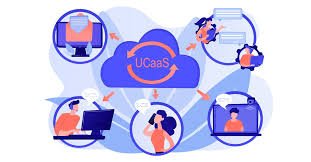Chat GPT is revolutionizing the customer service industry, enabling companies to work smarter and faster than ever before. It’s an advanced natural language processing technology that provides automated customer service, personalized responses and even creative content. In this blog post, we’ll take a look at what chat GPT is, how it works, its benefits and challenges, and how to get started with the technology. Stick around to learn more about how this innovative technology could benefit your business!
Overview of chat GPT
Chat GPT (Generative Pre-trained Transformer) is an advanced natural language processing technology that is revolutionizing the customer service industry. By leveraging deep learning models such as Transformers, Chat GPT is able to generate written output from an input with a high degree of accuracy and contextuality. This technology is being used in a variety of ways, including summarizing large documents, generating natural language responses to user queries, helping robots understand human language, and even creating creative content such as poetry and stories.
Chat GPT has numerous benefits that make it an attractive option for businesses looking to improve their customer service capabilities. For starters, it can automate customer service tasks and deliver accurate responses quickly. Additionally, its ability to personalize responses increases customer engagement and satisfaction. Finally, Chat GPT’s creative capabilities enable businesses to create unique content that stands out from the competition.
Despite these advantages, there are some common challenges associated with using chat GPT technology. For example, training the system requires a significant amount of data in order to achieve accurate results. Additionally, ensuring compliance with data privacy regulations can be difficult when dealing with sensitive information. Finally, since Chat GPT relies on deep learning models like Transformers which require immense computing power for training, implementing this technology can be costly for some organizations.
Overall, Chat GPT offers many potential benefits for businesses looking to improve their customer service operations or create unique content. To get started with chat GPT technology it’s important to have access to enough data for effective training of the system as well as sufficient computing resources for running the algorithms behind the technology. It’s also important to ensure compliance with relevant laws and regulations regarding personal data protection while using this technology in order to avoid any potential legal issues down the line.
How does chat GPT work?
Chat GPT is a revolutionary natural language processing (NLP) technology that enables customers to receive quick, accurate and personalised service. By combining AI algorithms and machine learning techniques, the GPT system can interpret user input and produce an appropriate response in real-time.
At its core, Chat GPT focuses on understanding user intent and conversational context. When a customer engages with the system, it searches for predefined intents linked with predetermined replies, generating an accurate response that is tailored to the customer’s needs. With each conversation, Chat GPT stores data in its memory bank which improves its ability to refine responses over time.
The possibilities of Chat GPT are broad and far-reaching; from automating customer service tasks such as answering FAQs or providing information about products/services through to more complex functions like providing personal recommendations or even composing unique content based on user input.
For businesses, implementing chat GPT offers a number of advantages: cost savings due to automation; faster responses without compromising quality; improved customer experience by way of personalisation; plus increased accuracy and efficiency as the system learns from interactions with customers over time.
Benefits of using chat GPT
Chat GPT offers businesses a range of benefits that can help them improve their customer service operations. One of the most obvious advantages is cost savings; with chat GPT, businesses can reduce their customer service costs by automating large parts of the process. This technology also enables faster responses to customers’ queries, as it can detect user input and respond in real-time.
Improved customer experience is another benefit of using Chat GPT; this technology can generate personalized responses based on the user’s input, resulting in an improved engagement with customers. Additionally, Chat GPT increases accuracy and efficiency by automatically detecting mistakes in customer interactions and responding to inquiries quickly and accurately.
Finally, Chat GPT helps businesses gain insights into customers’ preferences and needs; it captures data about users that can be used to identify areas for improvement in the customer experience. By understanding what customers are looking for from their interactions with your business, you can create campaigns tailored to meet those specific needs.
In summary, Chat GPT offers businesses a wealth of benefits that enable them to reduce costs, increase efficiency and accuracy, improve customer experience, capture data about customers’ preferences and needs, and generate leads. It is an invaluable tool for streamlining customer service operations and gaining insights into users’ behaviour.
Common challenges with chat GPT
Chat GPT technology is a powerful tool for automating customer service and creating personalized content, but there are a few common challenges that must be addressed in order to ensure its success. The first challenge is developing a robust NLU (Natural Language Understanding) system. NLU systems must be able to interpret natural language queries accurately and efficiently, which is no small feat. This requires extensive data collection and lots of computing resources, especially as the number of user queries increases.
The second challenge is integrating the chat GPT with existing customer support systems. Chat GPTs need access to customer data stored in databases or CRMs in order to provide users with accurate responses and personalize their experience. This integration can be difficult due to different underlying technologies used by each system, so businesses may need to invest in bridging solutions.
The third challenge is handling requests that are out of the scope of the chat GPT’s capabilities. Even when integrated with a customer support system, some requests will still fall outside the scope of what it can do – such as complex technical issues or cancellations – so these must be handled manually by human agents who have been trained accordingly.
The fourth challenge is maintaining accuracy and relevancy when responding to user queries. Chat GPTs are only as good as the data they are trained on, so businesses need to ensure that new data is regularly added and old data updated in order to keep up with changing user needs and preferences.
Lastly, businesses using chat GPTs need to ensure compliance with data protection laws such as GDPR (General Data Protection Regulation). These laws require businesses to protect user privacy by encrypting sensitive data transmitted over networks and deleting any unnecessary personal information collected from customers after use. With this in mind, businesses should make sure their chat GPTs adhere to all applicable regulations before deploying them into production environments.
In summary, while chat GPTs offer many benefits such as cost savings, faster responses, improved customer experience, increased accuracy and efficiency; they come with certain challenges that must be addressed in order for them to operate successfully within an organization’s infrastructure. With these points kept in mind however, businesses can reap all of the rewards that come with implementing this revolutionary technology into their customer service operations.
How to get started with chat GPT
Launching a chat GPT can open up exciting opportunities for businesses looking to automate customer service. To get the most out of this technology, it is important to consider the following steps.
Familiarize Yourself With Tools & Platforms: Familiarizing yourself with the different tools and platforms offered by providers will allow you to decide which one meets your needs. Research each service thoroughly, and consider their features and capabilities when making your decision.
Decide On The Type Of Chat GPT To Use: Once you have chosen a provider, select the type of chat GPT that best suits your business requirements. Choices may include text-based systems or voice-driven systems powered by AI. Weigh up the advantages and disadvantages of each before settling on one.
Create A Plan For How It Will Be Used: Subsequently, draw up an action plan for how the chat GPT will be used in customer service or marketing endeavors. Think about which tasks should be automated as well as when they should occur in customer interaction cycles – also decide how much control you want over conversations with customers and if human intervention is necessary at certain points.
Integrate Into Existing Channels: As part of implementation, integrate the new system into existing channels such as webchat or social media profiles. This ensures customers are provided with consistent quality service regardless of their preferred communication channel.
Test & Refine Implementation Over Time: Lastly, continue testing and refining your set-up over time in order to guarantee maximum effectiveness and accuracy while adhering to data protection laws. Both manual tests and automated tests measuring response times across multiple conversations should be carried out regularly to ensure users always receive high-quality responses from anywhere in the world!
By following these steps when getting started with chat GPT technology, businesses can unlock its potential while avoiding common pitfalls along the way!






